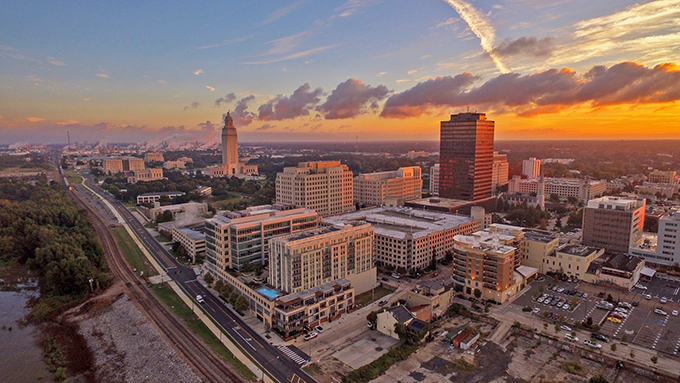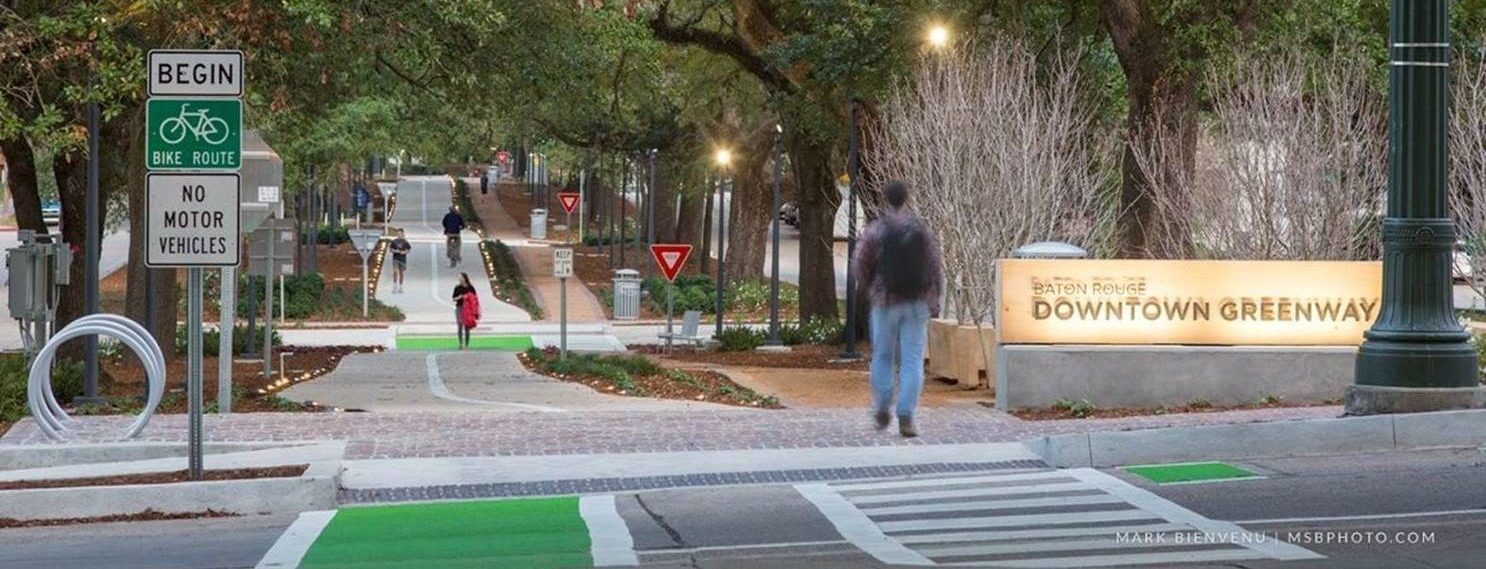Downtown Breakdown: Downtown's Next Master Plan
The Downtown Development District has released the 2024 Development Toolkit - a document highlighting downtown’s demographics, statistics, and other resources meant to meet the needs of the development and business community. This year’s Toolkit includes data obtained from the International Downtown Association’s (IDA) Downtown Value report released earlier this year and cellphone generated data from the software program, PlacerAI, to obtain valuable insights on movement patterns, event attendance, and the retail market. But…. what does this data show us and how can it be useful in the creation of the next downtown master plan, Plan Baton Rouge III?
The Toolkit utilizes current data to analyze the current economic vitality of downtown, indicating a stable environment that continues a positive trend. The statistics below are encouraging - and prove that community-driven master plans, founded on robust community engagement and input, yield significant results.
- Investment: Over $2.7 billion invested both from the public and private sectors since the DDD’s creation in 1987.
- Property Values: 2.5 times higher than the parish-wide average.
- Office: Occupancy rates remains stable at (88%) for Class A /B/C markets due to the conversion of downtown office space to residential, both before and after the pandemic.
- Residential: Over $224.6 million has been invested in residential development since 2013 and the residential population has grown 16.4%. The demand to live downtown continues to be high, marked by an occupancy rate of 90% within the Central Business District.
- Jobs/Business: Over 20% of citywide jobs are located downtown (approximately 31,000), contributing to the stability of the business environment; with the number of businesses at just over 650.
- Hospitality/Tourism: $135 million invested since 2010 on 7 Hotels and 1176 rooms. Daily rates and occupancy rates remain higher than the parish average.
- Quality of Place: Downtown boasts significantly higher walk and bike scores compared to other Baton Rouge areas and 53 acres of greenspace. Over 1000 events are hosted downtown each year within the greenspaces or other major cultural attractions including the Raising Cane’s River Center, public art venues, galleries, theatres, markets, and more.
Without Plan Baton Rouge I and II, these numbers could be drastically different. Some of you may remember what downtown was prior to the community coming together to craft a vision for what they wanted downtown to be. My predecessor Davis Rhorer, once told me that you could lay in Third Street after 5 pm, and not worry about getting run over until the next day at 8 am. Funny, but thank goodness that is not true today. We are in a MUCH better place because of Plan Baton Rouge I and II, the people that were engaged in their creation, and the elected officials and organizational partners that supported their implementation.

Often, I hear people talk about plans on shelves – at the DDD, plans are on our desks – open, marked in, and a little tattered. With our partners and community support, many of the projects within them have been implemented. Don’t believe me? Check out the matrix below showing some of the objectives/recommendations of the plans and what was implemented. You can also view the more graphic DDD timeline here.

Objectives |
Specific Recommendations |
Achievements |
|
PBR1 |
Re-establish Culture |
Establish downtown as a cultural center |
Consolidation of the Old State Capitol surroundings as a cultural anchor, Shaw Center for Performing Arts, Arts and Entertainment District, River Center Expansion |
Enhance Riverfront |
Take Advantage of the Mississippi River |
River Center Expansion, Hilton Renovation, Repentance Park Renovation |
|
Create Environment to Live, Work, and Play |
Create a 24-hour city; a place for living, working, shopping, and creating |
Mixed-Use Parking Garages (Galvez, Convention St, and LaSalle), 5th District BRPD, Main Street Market/Red Stick Farmers Market, and YMCA in garages |
PBR2 |
Activate |
Create Mixed-Use Corridors, Enhance Third Street Entertainment/Shopping, Create Housing Opportunities in the Downtown CBD and edge, Establish Shared Parking Strategies |
Third Street Diversity/Multi-use Corridor, CBD and Downtown East Housing Increase |
Connect |
Prioritize connections to the Riverfront, Create Bike/Ped Connections to Adjacent Neighborhoods, Enhance Transit Opportunities |
Florida Riverfront Access/Rotary Sculpture, Repentance Park Extension, Downtown Greenway, Bus Rapid Transit |
|
Green |
Establish an Urban Forest through Parks and Street Trees, Unify Cultural and Civic Attractions through a 'Central Green', and Enhance Riverfront Plaza, Capitol Park and Desoto Park |
Central Green (North Blvd Town Square, Galvez Plaza, Repentance Park, Rhorer Plaza), Levee Trail Extension, Street Tree Planting, Downtown Greenway, Convention St Park |

Ok, so we got some things accomplished and the data shows it, what now? Now we take a step back, take a closer look at the new downtown landscape and dream again – because the work is never done and downtowns are important to a community’s overall vitality. They are the epicenter of commerce, serving as the place where the community comes together to live, work, and play. The most successful cities and downtowns consistently plan for the next phase of development, defining the vision that attracts continued investment. And that brings us to - Plan Baton Rouge III. We couldn’t be more excited about it, because it has been over 15 years since the community has come together to dream with us. Get ready Baton Rouge – the planning team should be selected and ready to go in the beginning of 2025. Once the plan is finished, we can’t wait to roll up our sleeves, dirty the pages a little, and implement it with our community partners.
To learn more about Plan Baton Rouge III, click here.
